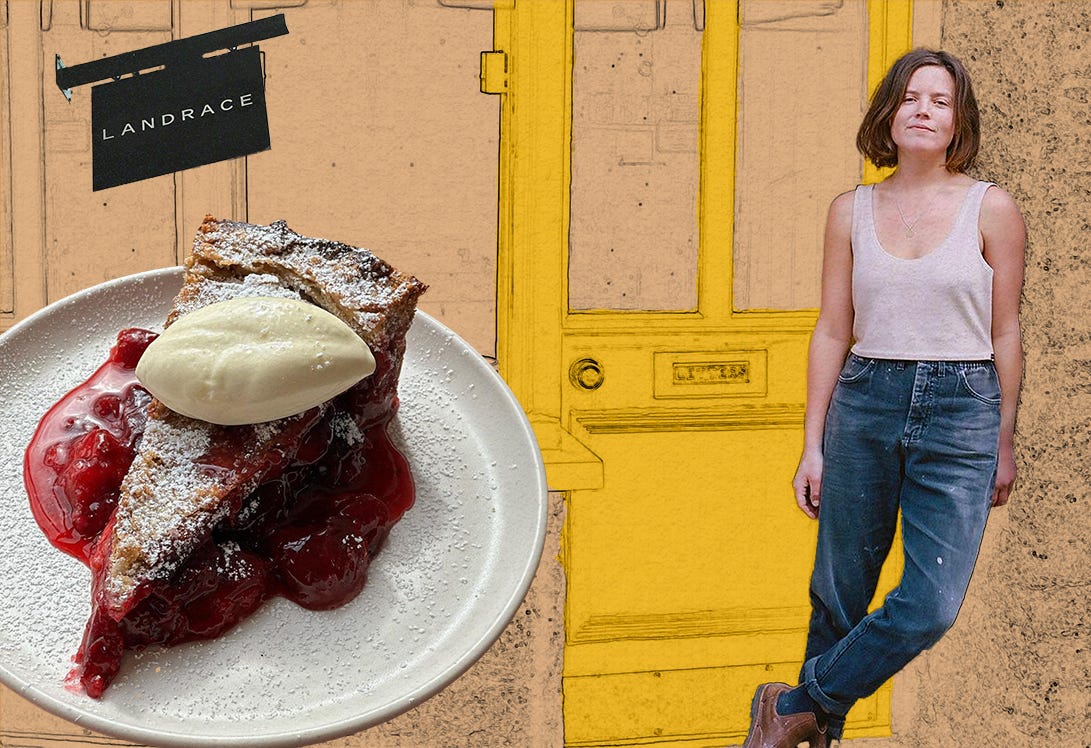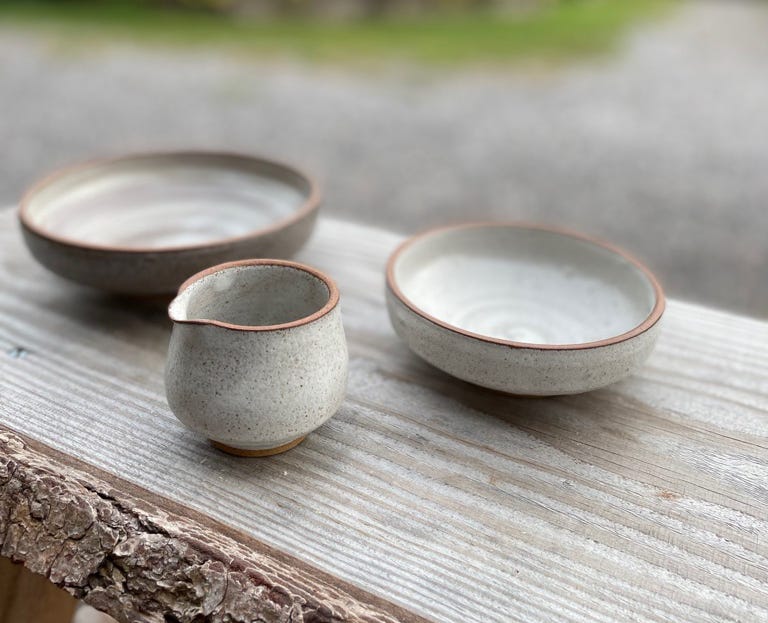The Somerset potters making plates for the area's favourite restaurants [WFJ #79]
Even tableware can provide an important expression not just of a restaurant, but of the land
Restaurants – particularly many of the good ones – want to tell you a story. There are times, like in their branding, when that’s more obvious. There are times, like in what producers they source from, or how the servers address you, it’s a little less so.
Then there are times, without looking, you could easily miss it entirely. Take The Ethicurean, south of Bristol between Weston and Chew Magna, for example. When head chef Mark McCabe wanted to furnish his tables with plates, pots, and bowls to reflect the hyperlocal nature of the place, he didn’t have to look very far. Just the other end of the walled garden in which the restaurant resides, in fact, where Bill Moore, who’s professionally thrown clay for 25 years, has his studio.
In response, Bill set about digging clay from the garden – shared with the same ground that grows the restaurant’s veg – to process and then throw to Mark’s brief, and, once fired, used the ash from the orchard’s apple trees as a decorative glaze.
The results are somehow striking and understated in equal measure. The latter generally being par for the course in the hospitality industry – when I interviewed North Street Potters’ Naine Woodrow several years ago, she said she generally got two types of customers. One was someone, a civvy, who wanted something bright and colourful to hang on their wall. The other was another species entirely – that of the chef.
“They buy exactly the opposite,” Naine told me in 2017. “Something that’s pale blue, pale grey, or off-white. Any chef under the age of thirty will buy that colour. A chef who’s forty-plus is much more confident, and is prepared to buy and use more colourful wares. For example Michel Roux Jr – he’ll be quite happy with a plate that’s a mixture of brown and blue. Simon Rogan’s cover plates are dark black with a very rich green third on one side, which is quite unusual. But terrific for me to make.”
To Naine, the solid blues or greens or greys or whites betrayed, as she put it, a “reluctance in expression”. Although, you don’t have to be bold to be expressive, and depending on what you’re serving, there is such a thing as a lack of contrast between plate and food.
Maybe it’s a given, then, that chefs tend to flock to potters who’re generally more understated in their craft. A potter like, say, Fi Underhill. Fi, who used to work with Naine but now has her own shop – ‘Ground’ – on Frome’s Catherine Hill, has had commissions from the likes of Oak restaurant and Landrace, both in Bath.

“Landrace were really specific,” Fi tells the WFJ. “They wanted pasta bowls, dinner plates, small bowl-type things for olives. They also wanted this,” she says, picking up what looks not dissimilar to a ramen bowl, “which I've not made for anyone else. It was in response to them asking for something in which sauce would collect, like with a dish of mussels. They thought the speckled clay that I often use was a bit distracting, so for texture they wanted a smooth, white finish.”
Though Fi’s plates are simple and understated, the design and craft required of them is more concerned. “It sounds really obvious,” she says,“but when you’re making a plate, you want it to be really flat. But as you’re pushing the clay outwards, you can quite easily get a dome in the middle. You also want something that’s easy to pick up and put down, so it needs to have a bit of a lip, and you want it to look nice and elevated on the table, which a small foot ring will help with.”
As for materials, Fi usually sources clay from Potclay in Stoke-on-Trent, whose clays are almost always from their mine in South Staffordshire. But, like Bill Moore’s work for The Ethicurean, Fi has experimented with digging her own clay.1 Which sounds romantic at first, but less so after the required process of drying, washing, sieving, and drying again. As much as Fi is “really interested in using materials around the place where I am,” it’s a commitment potters usually can’t find the time for.
This desire small scale potters have for more of a local connection with their materials is similar to that of chefs with their ingredients. In restaurants however, the end consumer is generally consciously looking for provenance in what they’re served – not in what it’s served on.
If we’re to draw another parallel with food, Somerset provides a good example with it – being such a clay-heavy county in some parts, and therefore not particularly conducive to growing veg or grain, we sit on a largely untapped resource. One that could help us strengthen our relationship with the local land and what it offers.
As they announced in June, The Ethicurean is shutting up shop at the end of September. Even after 13 years, their presence within the local food environment seems fleeting. But if you ask pretty much anyone who’s eaten there – because of the food, the service, the setting, and even what might be considered the barely perceptible details such as the plates – they’ll say their memory of it is anything but.
If you go past her shop, look in the window for a little card holder. Its reddish hue might make it look like it’s made from terracotta, but that’s Frome clay.




